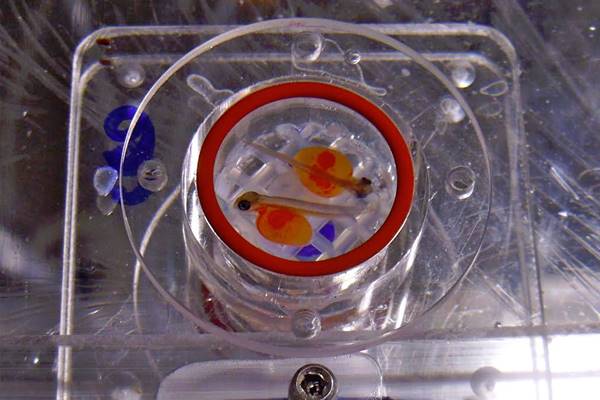Ten-Week Study Of Salmon Development Charts Effects Of Freshwater Acidification
The effects of ocean acidification on fish have been widely studied, but investigations looking at the impacts of freshwater acidification have been fewer and far between.
Researchers at the University of British Columbia and MacEwan University have completed a study that helps fill that gap. Looking specifically at pink salmon, from eggs through the fry stage, they found that even minor increases in acidification affect the fish’s growth, its sense of smell in the water and its ability to detect amino acids that it uses as a marker to find its way back to spawning grounds.
“We looked at salmon because they have a unique life history,” said Michelle Ou, lead author of the study posted in the journal Nature Climate Change. She led the study while a master’s student at the University of British Columbia pursuing studies in comparative physiology. “They are freshwater fish and then transition to saltwater.”
The investigation used a flow-through system of tanks subjected to varying levels of carbon dioxide. Higher levels of CO2 made the water more acidic. The highest level that salmon were subjected to was 2,000 parts per million. The medium level was 1,000 parts per million, which is the 100-year projection for what CO2 levels will become. Another set of tanks oscillated between 450 and 2,000 parts per million to duplicate variations that occur naturally in some rivers, like the Columbia and Fraser Rivers in Canada. The control group of tanks was subjected to 450 parts per million, which is around what freshwaters contain currently.

Respirometers are used to measure oxygen consumption of alevin salmon. (Credit: Michelle Ou)
Salmon were exposed to the levels over a course of ten weeks, and scientists tracked their development from hatching to the time they would typically migrate to ocean water. The fish were sampled for growth measurements as well as their max metabolic rates, tracked through the amount of oxygen they consumed in the water using respirometers.
“Because we were measuring maximum oxygen consumption, we chased them around a bit to get them active before we put them in the tank to get measurements,” said Ou. The tests revealed that metabolic rates of the salmon went down from exposure.
Using electro-olfactograms to study sense of smell, scientists found that the fish were also less likely to notice alarm substances that fish secrete to warn others that predators are near. “What we find in our fish under higher CO2 is they have less ability to detect the cue and less drive to flee. They don’t show anti-predator behavior.”
The ability to detect amino acids was also affected. “They use it (amino acids) as a smell fingerprint. They use it as a way to find their way home,” said Ou. “That might impact their ability to migrate, but we don’t know specifically that it will.”
Overall, the increases of carbon dioxide that the fish had been subjected to led to extensive impacts, researchers say, including a find that they are smaller at the time they’d typically migrate to the sea. “Smaller members have less success finding food and higher predation rates,” said Ou.
“We were surprised because the levels weren’t large,” said Ou. “To find that they affect so many aspects of physiology and behavior is really surprising.”
The findings, however, can’t be blindly extended to all other freshwater fish. But Ou says they can be used to point to the need for more study into the impacts of acidification on freshwater fish.
“Their behavior is altered. Sensory and cognitive functions are impaired. But they’ve found that in marine fish,” said Ou. “This is the first to look at freshwater fish. We do see these effects at small levels. It’s important to study them in other salmon and freshwater fish because 40 percent of all fish species are freshwater fish.”



0 comments